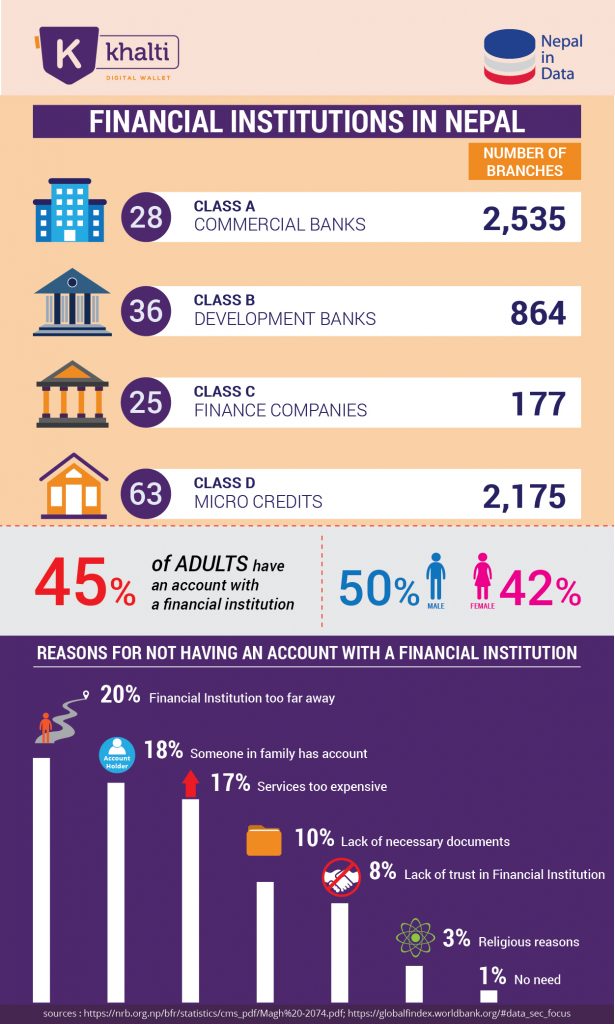The Financial Institutions in Nepal mainly comprise the Central Bank which is better known as the Nepal Rastra Bank, the commercial banks, development banks, finance companies, and micro-credit development banks.
The Nepalese financial system development has a very recent history, starting just from the early twentieth century. In the year 1937 AD, Nepal Bank Limited was established as Nepal’s first commercial bank. The establishment of NBL was epoch-making since it signified the commencement of the formal banking system in Nepal. To improve the banking system, the Nepal Rastra Bank Act was passed in 1955, and the Nepal Rastra Bank (NRB) was created in 1956 as Nepal’s Central Bank. Subsequently, Rastriya Banijya Bank and Agriculture Development Bank (ADBL) were established in 1966 and 1968 respectively.
Government-owned banks such as Agriculture Development Bank, Rastriya Banijya Bank, NBL and NRB were Nepal’s main financial institutions up until the 1980s, when private banks began to emerge.
The entry of other development banks, finance companies, micro-credit development banks, savings, and credit cooperatives, and Non-government organizations (NGOs) for limited banking transactions started after 1992 under three major acts namely the Finance Company Act 1985, Company Act 1964, and Development Bank Act 1996. After introducing these acts, financial institutions in Nepal have seen steady growth.

The status of Financial Institutions in Nepal
With 5700 branches, Nepal has 28 commercial banks as of today. There are 36 development banks, 25 finance firms, and 63 micro-credit development banks as of today. However, as per the World Bank’s Global Findex Database 2017, 45% of adults are reported to have an account in a financial institution.
Major reasons for not having an account in Financial Institutions in Nepal:
1. Financial institutions are too far away
2. Banking service too expensive
3. Unavailability of necessary documents to open an account
4. Lack of trust in a financial institution
5. Inadequate financial literacy, etc.
666 local levels in Nepal, out of a total of 753, have access to commercial banks. The government has already begun paying social security and other government payments to citizens through banks in order to foster banking habits. The government should be applauded for taking such a step.
A specific effort to open bank accounts for all Nepalis within a year was also promised in the government’s recent budget. Citizen’s financial inclusion, mobile banking and online payment habits will be progressively promoted.
Infographics partner: Nepal in Data


